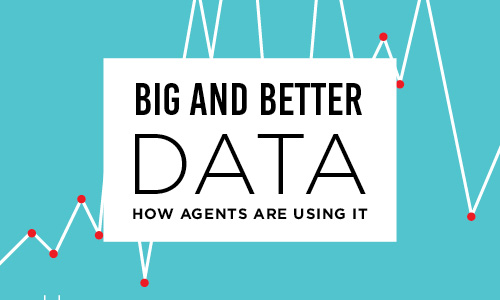
In every major sector of the economy, big data has become big business. In ways not possible just a decade ago, companies collect, crunch and analyze information to unlock consumer patterns and forecast market conditions. Data-driven insights have ignited new sectors altogether, from product design to marketing to anticipating customer preferences. Today, big data’s public company success stories literally run the A-to-Z gamut: from Amazon to Zillow.
As big data revs up, so too will it revolutionize real estate’s already robust digital sales platforms. Clearly, the foundation is in place. The National Association of Realtors’ 2016 Profile of Homebuyers and Sellers indicates that 86 percent of homebuyers named websites as their most useful information source, while 79 percent recognized real estate agents as a very useful source. Some four out of ten homebuyers (44 percent) first search for homes online. And they like what they see: 89 percent said photos were very useful, while 85 percent said the same about posts with detailed property information.
Just as homebuyers now browse for homes online, they are also increasingly navigating the web for data sources and other information that will help inform them on their purchase.
In growing numbers, data companies and repositories now offer crucial information to agents, brokers and consumers to bolster the homebuying process. Some data is broader and related to a property’s neighborhood and the surrounding area. Other sources focus more on a property’s specifics, including square footage and renovation details.
Though the platforms now available to agents and consumers are diverse, the information they channel reflects a specific focus. Depending on the findings they generate, the data layers are drawn from public records or aggregated from sources such as review sites. And the sources can be just as diverse – they can come from for-profit companies like Redfin or from universities like DePaul.
“We try to put out as much as we can and get people some information currently and historically,” says Geoff Smith, executive director of the Institute for Housing Studies at DePaul University. The IHS—supported by the MacArthur Foundation—generates insights specific to the Chicago area DePaul calls home.
“We also encourage folks to get in touch with us directly,” adds Smith. The IHS can provide guidance on strategic use of data “and how to drill down in certain ways to answer questions that might come from a review of [what] we publish on the portal.”
The IHS pulls information from a variety of public sources to paint a comprehensive picture of how housing evolves in specific neighborhoods and geographies. The portal targets community development professionals and organizations that study issues such as foreclosures and rising property taxes, enabling them to determine where their policy solutions might work best.
But the IHS also makes public-facing tools available to real estate professionals interested in spotting those same patterns. The data storehouse covers mortgage lending, property sales and foreclosure filings, though it is not frequently updated. A price index tool that tracks single-family home prices in 33 sub-markets within Cook County receives more regular updates.
That index tool uses property sales data based on a more complex statistical formula developed by the IHS to account for factors that might affect sales price, Smith says. “After controlling for property value factors such as square footage and number of bedrooms, and location factors such as proximity to a train station or the lake, we can essentially track every quarter of the affect that time and location have on sale pricing.”